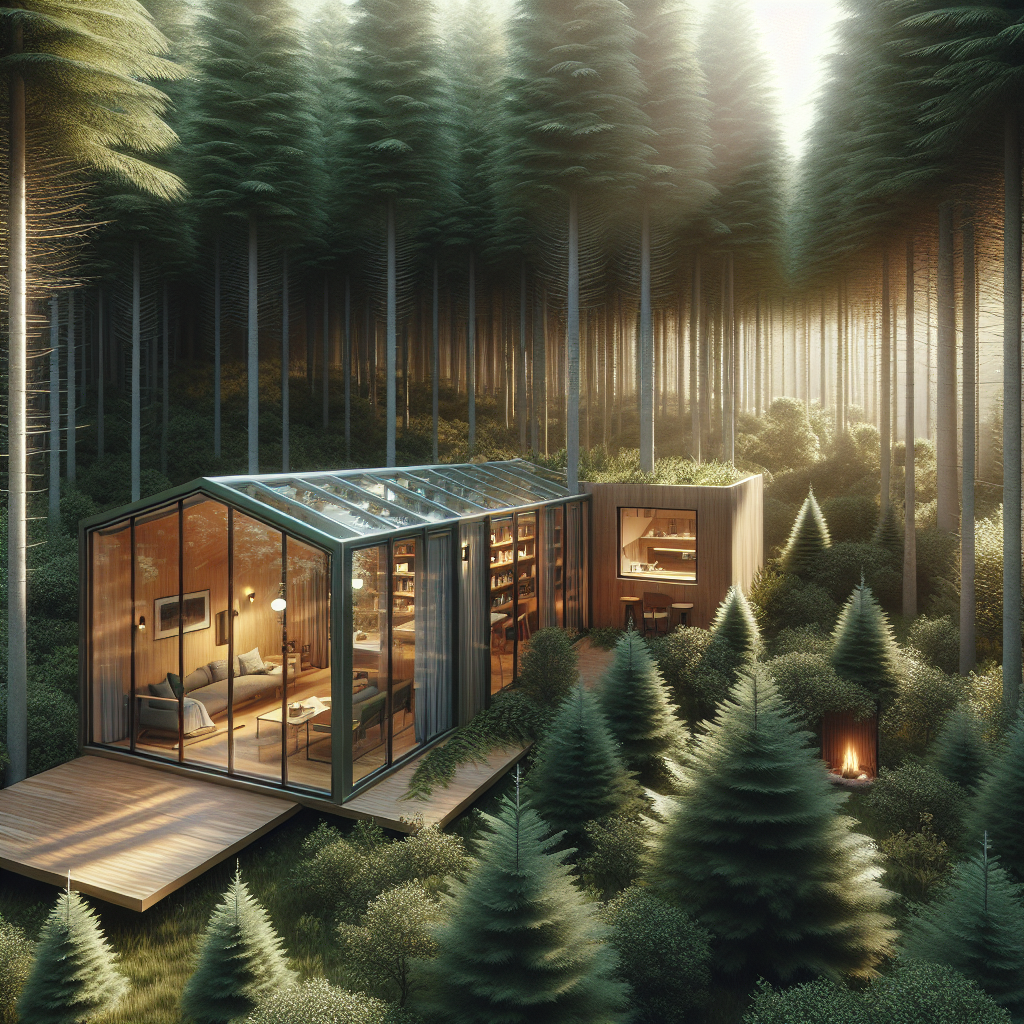Introduction to Forest Micro-Cabins
In an era where digital connectivity is ubiquitous, the allure of disconnecting and retreating into nature has given rise to the popularity of forest micro-cabins. These small, often eco-friendly structures offer a sanctuary away from the hustle and bustle of city life, providing a unique blend of simplicity and intimacy with the natural world.
Why Forest Micro-Cabins Are Gaining Popularity
Forest micro-cabins appeal to those seeking a minimalist lifestyle, reducing their ecological footprint while enhancing their connection with nature. The cabins, usually ranging between 100 to 400 square feet, are designed to maximize space and minimize environmental impact. This trend is particularly appealing to eco-conscious individuals who value sustainability and simplicity.
The Appeal of Minimalist Living
The concept of living small goes hand-in-hand with a minimalist lifestyle, which has been gaining traction globally. Forest micro-cabins embody this philosophy by offering just enough space for essential living, encouraging occupants to focus on the outdoors and personal reflection rather than material possessions.
Eco-Friendly Aspects
Many forest micro-cabins are built using sustainable materials and technologies, such as solar panels, composting toilets, and rainwater harvesting systems. This not only reduces the dwellings’ carbon footprint but also aligns with the broader goals of conservation and environmental stewardship.
Challenges and Considerations
While the idea of a forest micro-cabin might sound idyllic, there are several practical considerations potential owners must contemplate. Zoning laws, land acquisition costs, and accessibility can be significant hurdles. Additionally, living in such compact spaces requires a certain temperament and lifestyle adjustments, which might not suit everyone.
Zoning and Legal Restrictions
One of the biggest challenges for aspiring forest micro-cabin owners is navigating the complex web of zoning laws and building codes. Many regions have strict rules regarding the construction of dwellings, particularly in rural and undeveloped areas.
Lifestyle Adjustments
Living in a micro-cabin often means sacrificing some comforts of modern living, such as large kitchen spaces, extensive plumbing, and sometimes even connectivity. Prospective dwellers must be prepared to adapt to these changes and embrace a more frugal and resourceful way of living.
Real-World Examples
Across the globe, from the forests of Scandinavia to the wilderness of the American Pacific Northwest, forest micro-cabins are popping up. These cabins not only serve as personal retreats but have also been utilized as artist studios, eco-tourism accommodations, and even as off-the-grid homes.
Conclusion: The Future of Forest Micro-Cabins
As more individuals seek ways to escape digital saturation and reconnect with nature, the trend of forest micro-cabins is likely to grow. These structures offer a tangible way to embrace eco-friendly living and find peace in the simplicity of a minimalist lifestyle. As we move forward, we may see an increase in innovative designs that continue to push the boundaries of what these small homes can offer.
For those inspired by minimalist and sustainable living, exploring the benefits of forest micro-cabins can be a profound step towards adopting a greener, more intentional way of life.


